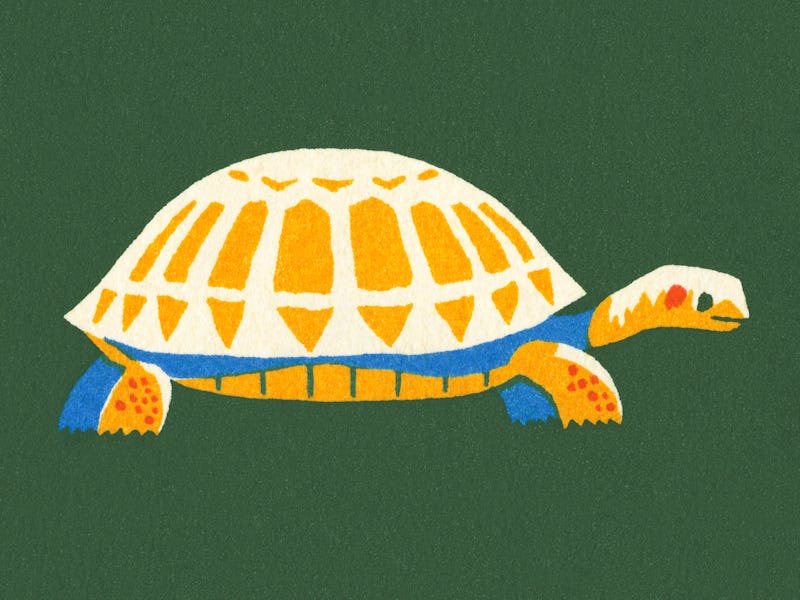Tortoises and humans share this one unique trait
Animal research explores why children are drawn toward face-like shapes.

When we're just little babies, spitting up and rolling around, we also exhibit another, slightly weirder proclivity — gazing at faces, or anything that resembles a face.
Study after study has demonstrated that young children are inherently drawn toward face-like shapes, but exactly why this happens has alluded scientists for decades. And it’s not just human babies that display phenomenon. Other members of the animal kingdom, such as chicks and monkeys, have been observed to do it too.
Inverse is counting down the 20 stories redefining 'human' from 2020. This is number 6. See the full list here.
A potential reason that scientists have come up with is that perhaps we are seeking out our parents, as we need their care to survive. It was thought, in turn, that we’d evolved this attraction to faces as a means of helping youngsters to find their caregivers.
Research published in September set out to try and end the confusion. To do this, scientists at Queen Mary University of London tested whether tortoises demonstrated the same affinity for faces.
Tortoises differ from the other animals as they do not receive or need any parental care when in the early stages of their life — they don't even form social groups as they grow older. In short, tortoises are loners.
Surprisingly, the researchers observed the tortoises still preferred face-like patterns over other configurations. They were seen to move towards face-like outlines, which were just made up of three blobs arranged in an upside-down triangle shape.
This innate attraction to faces, or anything that resembles a face, suggests that we possess some ancient evolutionary trait that makes us seek out and explore these shapes.
Given the fact that tortoises do not require any parental help, these results suggest a preference for faces predates parental care.
Inverse is counting down the 20 stories redefining 'human' from 2020. This is number 6. Read the original story here.
This article was originally published on